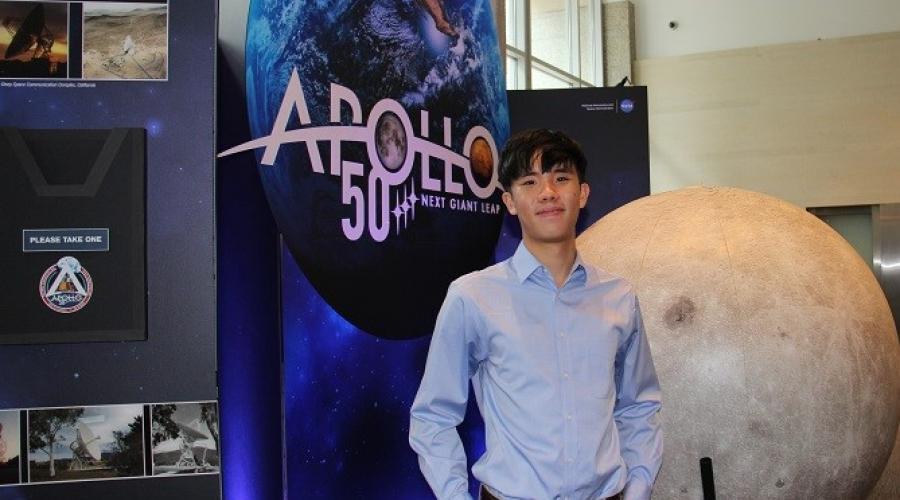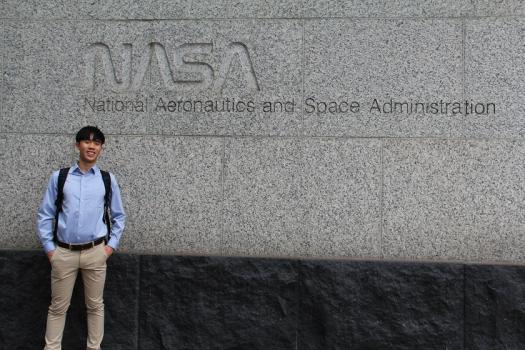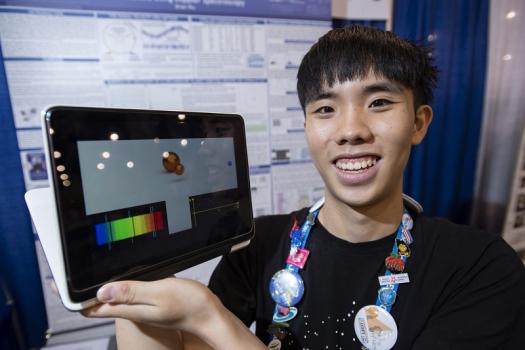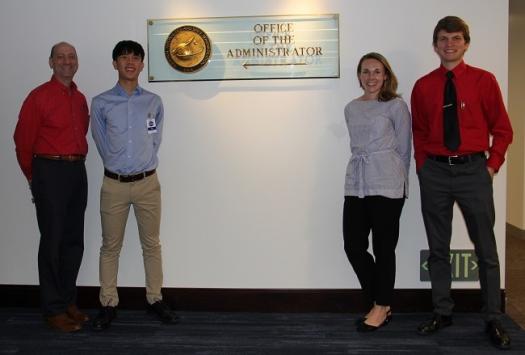Young astronomer’s research implores us to think beyond

As a child, Brian Wu (ISEF 2018-2019), a senior at Horace Mann School in New York City, was fascinated by the stars. He spent hours dreaming about venturing into interstellar space, but had few resources to pursue his passion. That changed in the ninth grade when Brian found an opportunity to pursue astronomy research in the lab of University of Florida Professor Jian Ge. Brian’s hard work and discovery of exoplanets using Doppler Spectroscopy brought him to ISEF as a finalist not just once, but twice. Along with receiving a $5,000 ISEF 2019 Special Award from NASA, Brian was invited by Louis Barbier, NASA’s Associate Chief Scientist, to give a talk about his research this past July.

“As an ISEF Special Award Organization, NASA aims to honor students who demonstrate the greatest potential to contribute to the space program as well as embody the creativity, hard work and ingenuity essential to NASA’s mission,” a spokesperson for NASA said. “Brian was selected to receive NASA’s Grand Prize because his research demonstrated the power and potential of selected techniques; his presentation was extremely thoughtful and the Agency’s judges found his work to be truly stellar. Brian was invited to NASA Headquarters in order to introduce the Agency’s scientists and technologists to his research. NASA is inspired to have Brian be part of the Artemis generation as the agency prepares to land humans on the Moon again by 2024.”

Brian’s interest in astronomy stems from a fascination with space and the stars. This interest gained urgency due to his belief that the Earth may become uninhabitable in the near future. “Earth is currently undergoing a massive transformation that will likely result in the end of civilization if no action is taken. Cities are becoming shrouded in industrial smog, water levels continue to rise and extreme weather events keep devastating remote areas,” Brian noted. “Take the ongoing fires that have devastated much of the Amazon rainforest for example. This is a vital ecosystem that plays a major role in maintaining Earth’s biodiversity. A large number of organisms native to the area have died out. What has really amazed me about this situation is that governments around the world have taken so long to respond to this natural disaster. While I aspire to play a major role in ultimately transporting humans to our second home, elsewhere in the universe, it is also critical that we are able to unite as one in order to save what truly matters most–our existence.”
In 2018, Brian finished the first phase of his research. “I focused on the detection of giant planets and brown dwarf candidates, especially ones with short orbital periods that better explain the formation of these worlds and how they interact with other objects in space.” Returning to ISEF in 2019, Brian built upon his previous discovery of a circumbinary planet (a planet that orbits two stars instead of one) and worked to prove its existence.

Brian was honored to present his research at NASA’s headquarters, located just a couple of blocks south of the National Mall. The room was filled with prominent scientists and researchers across NASA; an incredible networking opportunity for a young aspiring astronomer. “There are many factors that may cause planetary-like signals to appear in a star’s radial velocity data—these are measurements of the speed and direction a star is moving relative to the observer. I was able to show that the signal I was looking at was indeed caused by a planet.” Using radial velocity data collected by the MARVELS Radial Velocity instrument, he created a specialized software that allowed him to generate spectra of any arbitrary star. This enabled Brian to identify and eliminate several major sources of error that may have contributed to the planetary-like signal, which meant that the most likely source of the signal was from the planet itself. The same method could allow astronomers to more efficiently and precisely confirm stellar companions.

In the future, Brian plans to study physics and engineering. “I believe the knowledge in both fields is critical towards my future career as an entrepreneur in space exploration.” Given that the United Nations recently reported that we may be headed for a mass extinction event if no action is to be taken by 2050, we’ll be relying on Brian’s success in transforming humanity into an interplanetary species.


